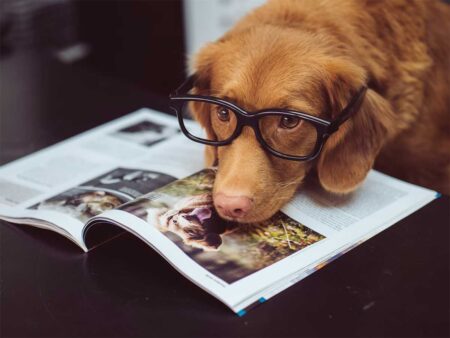Table of Contents
In an era where pet ownership is surging, dog walking has emerged as a popular and lucrative profession. With numerous pet owners seeking reliable and trustworthy individuals to care for their furry friends, many enter this rewarding field without fully understanding the inherent risks involved. One crucial aspect that often gets overlooked is dog walker insurance. Just like any other business, dog walking comes with its own set of liabilities and challenges that insurance can help mitigate.
This article delves into the world of insurance for dog walkers, providing valuable insights on why it’s essential, what types of policies are available, and how to effectively manage risks to protect both your business and your clients’ beloved pets.
The Importance of Insurance for Dog Walkers
Every profession comes with its own unique set of risks, and dog walking is no exception. By nature, this job involves handling animals with varying temperaments and behaviors, navigating busy streets, and sometimes dealing with unpredictable weather conditions. These factors elevate the potential for accidents and injuries, making insurance a vital safety net.
– Protection Against Lawsuits: If a dog were to injure someone or cause property damage while in your care, you could be held liable for those costs. Liability insurance protects you against lawsuits that may arise from such incidents.
– Peace of Mind: Knowing that you are covered in case of unforeseen circumstances allows you to focus on providing excellent service rather than worrying about potential legal repercussions.
– Professional Credibility: Clients are more likely to trust and choose insured dog walkers over those who aren’t covered. Being insured signals professionalism and responsibility.
Types of Insurance Policies for Dog Walkers
Understanding the various types of dog walker insurance available can help you make informed choices about what coverage is necessary for your specific business needs.
General Liability Insurance
General liability insurance is a fundamental policy that covers third-party bodily injury, property damage, and personal injury claims. This is crucial as it protects you if a client or bystander suffers an injury due to your actions while walking their dog.
– Example: If a dog escapes your control and bites another person during a walk, general liability insurance would cover legal fees or settlements related to that incident.
Professional Liability Insurance
Also known as errors and omissions insurance, this policy protects you against claims of negligence or inadequate service. If a client believes your services led to their dog’s injury or distress, this coverage can defend you in court.
– Statistical Insight: According to industry studies, around 30% of pet care businesses face allegations related to service failures or negligence at some point in their operations.
Property Insurance
If you operate your dog walking business from home or use equipment such as leashes, harnesses, or transportation vehicles specifically for your service, property insurance can safeguard these assets against theft or damage.
– Consideration: Think about all the equipment you use regularly. Even minor losses can accumulate quickly if not properly insured.
Workers’ Compensation Insurance
If you hire other dog walkers as part of your business expansion, workers’ compensation insurance becomes essential. This policy covers medical expenses and lost wages for workers who sustain injuries while performing their job duties.
– Legal Requirement: In many jurisdictions, having workers’ compensation is not just advisable but legally mandated if you have employees.
Understanding Risk in the Dog Walking Business
Identifying the potential risks associated with dog walking will help tailor your insurance coverage effectively. Here are some common risks:
– Dog Behavior: Each dog has its own personality; aggressive behavior can lead to bites or escapes.
– Traffic Accidents: Walking on busy streets poses risks not only for dogs but also for walkers.
– Weather Conditions: Rain or snow can affect visibility and road conditions, increasing accident risk.
By assessing these risks regularly, you can adjust your coverage and implement safety measures more effectively.
Factors Affecting Insurance Premiums
Numerous factors contribute to how much you’ll pay for your insurance premiums:
– Business Size: Larger businesses typically face higher premiums due to increased exposure.
– Location: Urban areas may experience higher rates due to denser populations and more traffic incidents.
– Claims History: A history of claims can lead to higher premiums as insurers view you as a greater risk.
– Coverage Amounts: The more extensive the coverage you choose (higher limits), the more expensive the premiums will be.
Understanding these factors allows you to better anticipate costs while budgeting for appropriate coverage.
How to Choose the Right Insurance Provider
Selecting an insurance provider requires careful consideration. Here are some steps:
1. Research Companies: Look into various providers that specialize in pet-related businesses.
2. Read Reviews: Customer feedback can offer insight into how claims are handled and overall satisfaction.
3. Compare Quotes: Obtain quotes from multiple insurers to find the best balance between coverage options and affordability.
4. Check Their Experience: Ensure they have experience dealing specifically with pet businesses; knowledge of industry nuances is critical.
5. Ask About Customization: A good provider will offer tailored packages that suit your unique requirements.
Case Studies: Real-Life Scenarios
Understanding real-life applications can illuminate the necessity of having adequate insurance coverage.
Scenario 1: The Aggressive Dog Incident
A dog walker named Sarah was walking a Golden Retriever when it suddenly lunged at another dog it spotted across the street. The ensuing chaos led to both dogs getting tangled up in leashes, resulting in an injury to Sarah’s hand requiring medical treatment. Fortunately, she had general liability insurance that covered her medical bills as well as potential claims from the dog’s owner for emotional distress caused by the incident.
Scenario 2: The Weather Mishap
James operated his dog walking business year-round but underestimated a sudden snowstorm during one winter afternoon walk. Slipping on ice caused him to fall, injuring his ankle severely enough that he couldn’t work for weeks. His workers’ compensation policy covered his medical expenses along with partial wage replacement during his recovery period.
These scenarios highlight how timely intervention through proper insurance can save business owners from financial disaster while providing peace of mind amid unexpected challenges.
Best Practices for Managing Risks as a Dog Walker
Insurance is crucial but should be part of a broader risk management strategy:
– Regular Training: Stay updated on canine behavior and training techniques through ongoing education courses.
– Safety Equipment: Always equip yourself with necessary safety gear (first-aid kits, reflective vests) while walking dogs.
– Client Communication: Clearly communicate procedures with clients regarding emergencies or behavioral issues.
– Maintain Documentation: Keep thorough records of every walk (noting any incidents) which can aid in claims processes if needed.
By adopting these practices alongside solid insurance coverage, you’ll create a safer environment both for yourself and the dogs in your care.
Navigating the complexities of running a dog walking business requires diligence not only in service delivery but also in protecting oneself against unforeseen challenges through effective insurance strategies. Adopting responsible practices ensures peace of mind while allowing focus on what truly matters—providing quality care for our furry companions.






